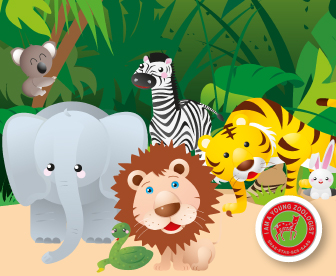I am a Young Zoologist
Enrolment options

What is a Zoologist? A Zoologist studies animals and their behaviors well as their physical characteristics, diets, and the impact humans have on them.
Instructions:
1. Try to carry out the activities by yourself.
2. Submit your completed works for us to certify! Only submit photos of your work
3. Be responsible. If you submit inappropriate content, you will be given a warning and may be barred from using the system.
4. For assignments that require video uploads, please upload your work onto youtube and then link us to the url.
The activities in the Young Scientist Badge programmes have been designed to encourage Curiosity, creativity, communication, open mindedness and perseverence
Syllabus Links
|
Task 1 |
Diversity - Shows variety of animal characteristics in the animal world |
|
Task 5 |
Diversity – Differentiates cat families and classifies them according to their similarities and differences |
|
Task 6 |
Diversity – Analysing physical characteristics between different animals and how land animals are different from aquatic animals |
|
Task 7 |
Interactions – How Man have negatively impacted living things and the environment |
|
Task 8 |
Diversity – Variety of physical characteristics and function of these physical characteristics |
|
Task 9 |
Diversity – Comparing between types of animals within a species |
|
Task 10 |
Diversity – Comparing between types of animals within a species |
|
Task 11 |
Interactions – Conservation of endangered animals and how impactful human activities are on the animal kingdom |
|
Task 13 |
Interactions within the environment – Observing diversity of animals found in an ecosystem |
|
Task 14 |
Diversity – Observing how classifications are made to show differences between the varieties of animals |
|
Task 15 |
Diversity – Classification of animals using physical characteristics |
|
Task 16 |
Interactions within the environment – Observation of different classified animals in their habitat |
|
Task 17 |
Interaction – Observing marine life and how conserving their habitat is important |
|
Task 18 |
Diversity – Identifying types of butterflies |
|
Task 19 |
Cycles in animals – Observing the life cycle of a butterfly to better understand its process |
|
Task 20 |
Interactions – Analysing/observing impacts of Man on
the environment and generating suggestions on how to protect and conserve
animals along with their habitats. Manual EnrollmentPlease purchase subscription at our ticketing page here: https://www.gevme.com/scientist Select either:
NOTE: as this is a manual enrollment please allow up to 5 working days tor processing time.Thank you for the support and patience. For school enrollment, please email: young_scientist@science.edu.sg |
